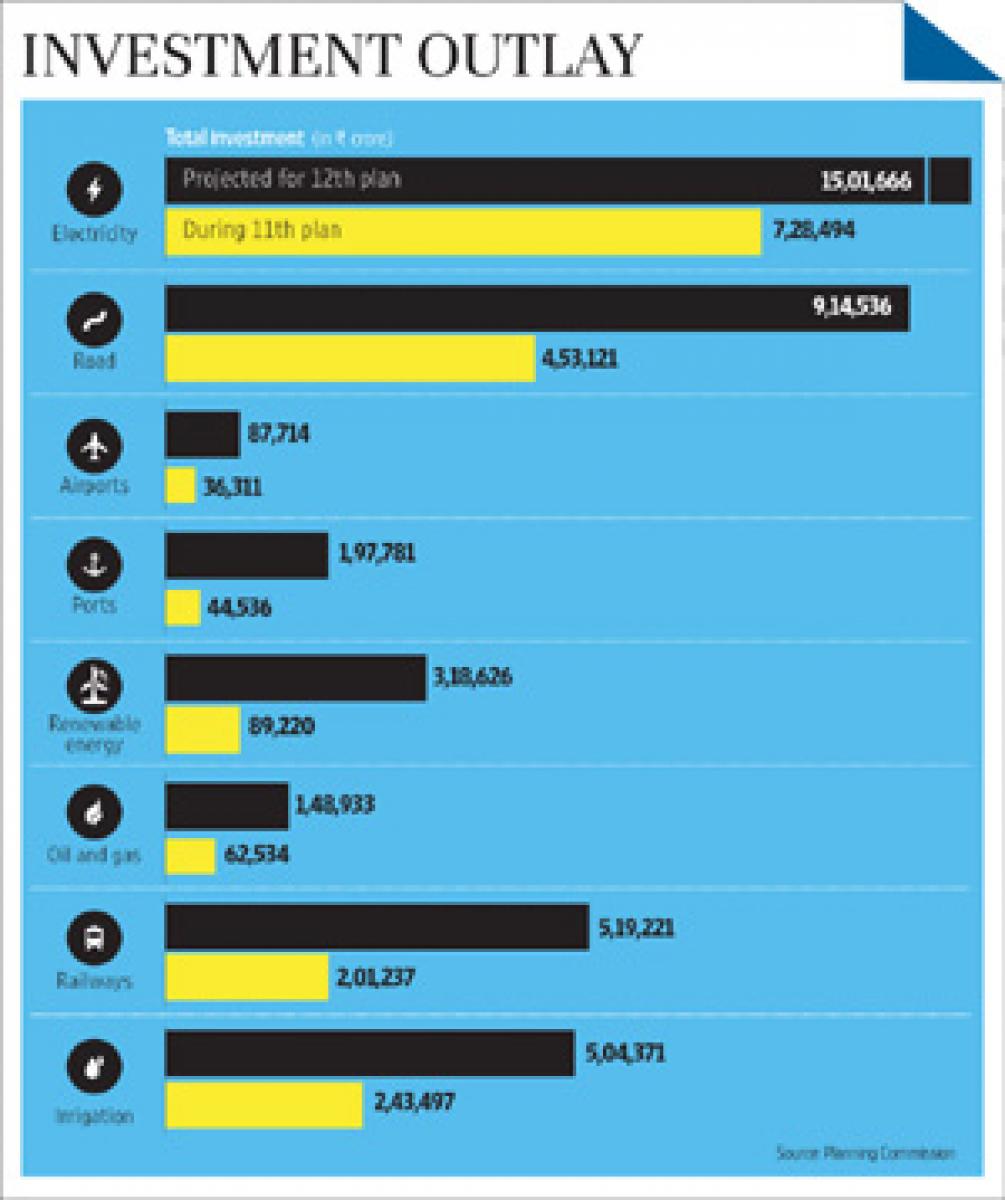Live
- CM discusses modalities with Union ministers
- Civic body to give boost to SHG group products
- Union Bank of India celebrates foundation day
- Thanks to Centre, AP on fast-track mode
- First Impressions and Unboxing of the MacBook Pro M4: A Powerhouse for Professionals and Creators
- China Gears Up for Potential Trade War Amid Trump’s Tariff Threats
- Small Farmers Gain Less by Selling to Supermarkets: Study Reveals
- Why Despite the Controversy, America Is Anticipating the Mike Tyson vs. Jake Paul Fight
- Sanju Samson and Tilak Varma Shine: Record-Breaking Feats in 4th T20I Against South Africa
- India Urges $1.3 Trillion Annual Climate Support for Developing Nations
Just In

It ranks foremost as a revenue earner that can propel the country’s economy and help consolidate it. There is no denying that the ever vibrant infrastructure sector continues to be a major impetus as regards pushing the economy in an upward direction.
It ranks foremost as a revenue earner that can propel the country’s economy and help consolidate it. There is no denying that the ever vibrant infrastructure sector continues to be a major impetus as regards pushing the economy in an upward direction.
However, a lot more could be achieved if the government of the day rings in dynamic initiatives that can attract more players as also invigorate the existing ones both of which can go a long way in bolstering the sector to hitherto inconceivable levels.
Given the plethora of approvals required for kick-starting an infrastructure project in any of its sub-sectors, a single window clearance is something that could propel the sector in the desired direction. The other positive is that it can sustain the confidence of investors in this unequivocally crucial sector.
The government should lay down detailed process and timelines, including online clearances for new infrastructure projects. Certain big ticket projects that meet specified criteria should be given a fast-track way forward boost. In addition to enhanced budgetary allocations, such systematically evolved initiatives will speak volumes about its seriousness to keep the stakeholders interested and in good humour.
Of course, the Centre has made an attempt to revive and give boost to Public Private Partnerships (PPPs). In what is a laudable move, the Public Utility (Resolution of Disputes) Bill was introduced in the last Budget as a means to resolve disputes in PPP ventures and expedite the process. It should follow up intent with action and work towards pushing crucial statutes so as to achieve the desired outcome, time and again.
Efforts ought to be made to ensure additional infrastructure funding by expanding the existing channels and attracting foreign capital with clarity so that overseas investors can take advantage of the ‘ease-of-doing business’ confidence-boosting proposition. Further, steps need to be taken to ensure that funding provided under the National Investment and Infrastructure Fund (NIIF) is fast-tracked and critical funding is not delayed because of inherent bottle-necks along the way, a fear that haunts many a new investor.
In this backdrop, the new GST Bill makes for a viable economic sense. The paradigm shift in total Indirect Tax regime reducing the complexities of assessment of tax liabilities and multiple taxes for the construction industry is certainly a well-intended visionary step.
At present there are certain service tax exemptions available for specific projects such as roads/bridges/tunnels/water supply projects including sewerage and metro railways, to name a few. Apart from these exemptions, the Finance Act 2016 restored the exemptions made available earlier in respect of projects like civil construction in favour of the government, educational/clinical construction projects, which were already entered into prior to February 2015.
Moreover, these exemptions apply to all such projects till March 31, 2020, that is after implementation of GST. Infrastructure industry is hopeful that exemptions available for the future period would continue in the GST structure that is on the anvil. (The writer is Executive Vice-president (Finance) with NCC Limited).
By Yd Murthy

© 2024 Hyderabad Media House Limited/The Hans India. All rights reserved. Powered by hocalwire.com







